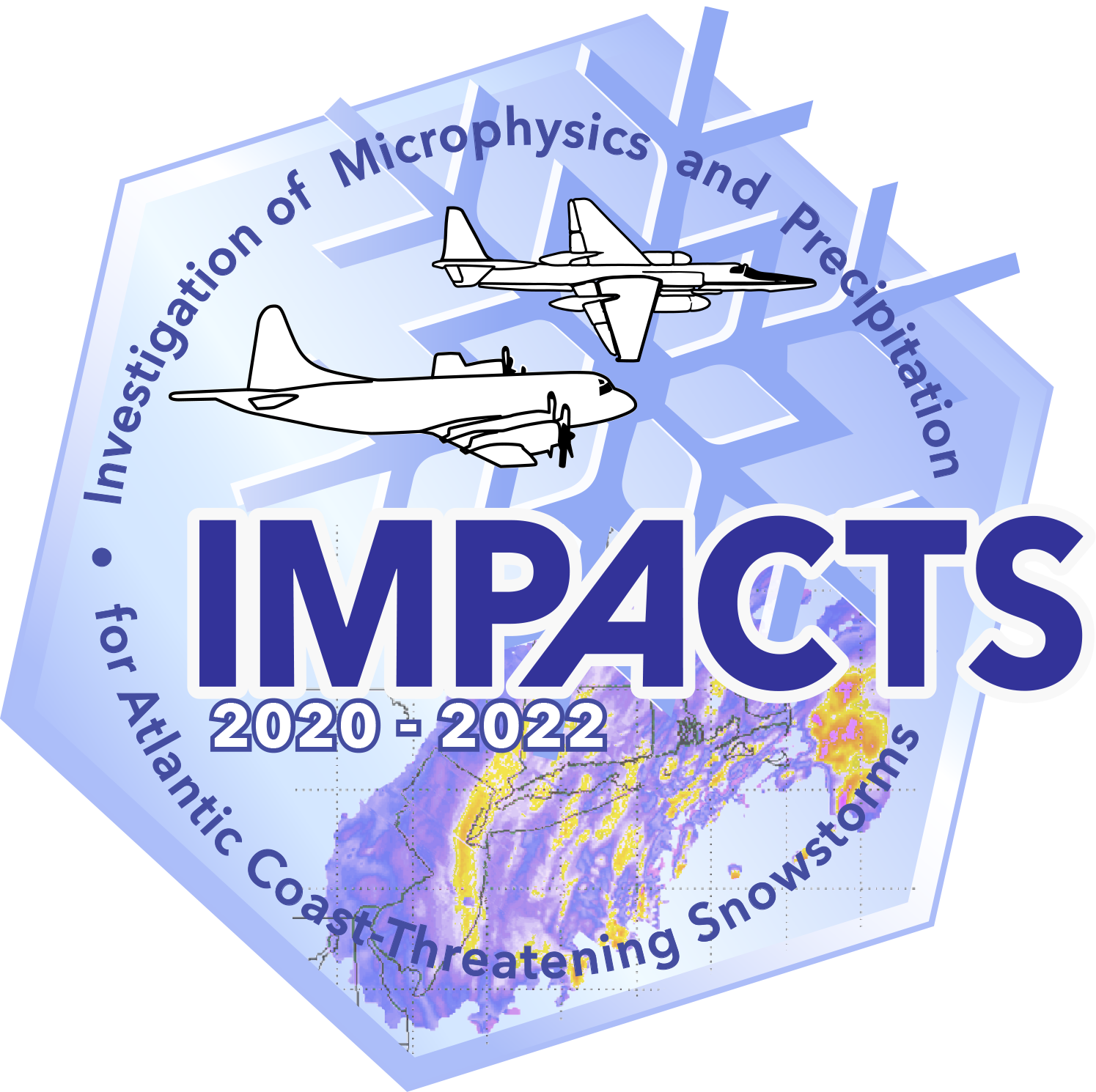IMPACTS
Investigation of Microphysics and Precipitation for Atlantic Coast-Threatening Snowstorms
The Investigation of Microphysics and Precipitation for Atlantic Coast-Threatening Snowstorms (IMPACTS) flies a complementary suite of remote sensing and in-situ instruments on two aircraft for three 6-week deployments during January and February in 2020, 2022, and 2023. The science goals of IMPACTS are to
- characterize the spatial and temporal scales and structures of snowbands,
- understand the dynamical, thermodynamical, and microphysical processes that produce the observed structures and
- apply this understanding of the structures and underlying processes to improve remote sensing and modeling of snowfall.
IMPACTS addresses the NASA Earth Science Enterprise science goal to study Earth to advance scientific understanding and meet societal needs, and the NASA Weather Focus Area’s research objective to “enable improved predictive capability for weather and extreme weather events.” IMPACTS is also relevant to the Global Precipitation Measurement (GPM) and CloudSat missions, and the National Academies recommendation for a designated program focused on clouds, convection, and precipitation.
The IMPACTS airborne instrument suite provides a synergistic range of measurements for snow process studies. It combines advanced radar, lidar, and microwave radiometer remote sensing instruments on the ER-2 with state-of-the-art microphysics probes and dropsonde capabilities on the P-3 to sample US East Coast winter storms. Ground-based meteorological, radar and rawinsonde measurements along with data from multiple NASA and NOAA satellites [e.g. GPM and GOES-16] and computer model generated fields augment the aircraft data
